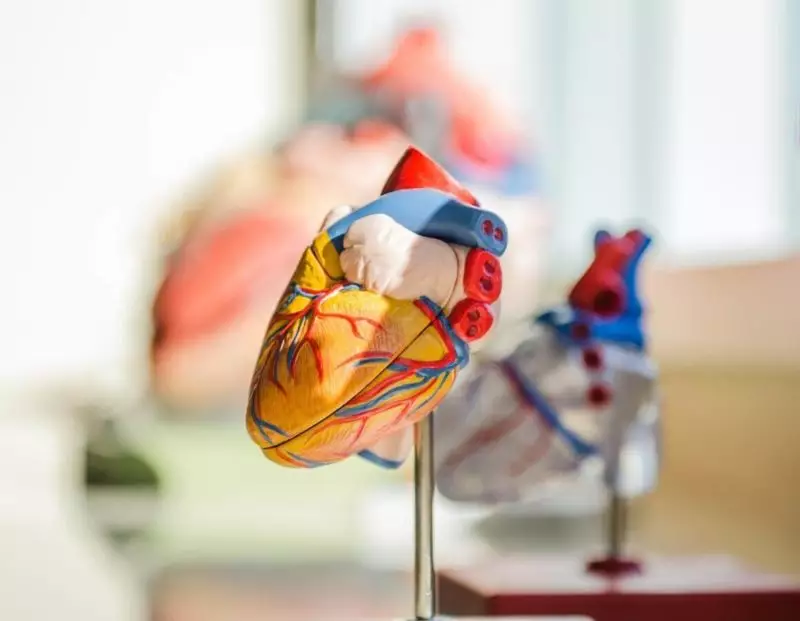
Congenital heart diseases are the heart’s structural abnormalities that occur during the development of the fetus.
CHDs are divisible into two categories:
- Acyanotic congenital heart diseases
- Cyanotic heart diseases (or CCHD as critical cyanotic heart diseases)
CCHD is further divisible into three kinds:
- Right heart obstructive lesions
- Left heart obstructive lesions
- Mixing of both lesions
Causes
The exact cause of cyanotic heart disease (CHD) is still unknown. However, most of these cases may be due to either environmental risk factors or genetic disposition (multifactorial).
Usually, cyanotic congenital heart diseases are sporadic. Sporadic refers to a disease that occurs infrequently and irregularly. They may also associate with genetic defects. The genetic mechanisms underlying congenital heart disease are complex and remain incompletely understood. The most potent environmental risks may include:
- Exposure to certain drugs and toxins
- Maternal defects and illnesses as phenylketonuria and diabetes
- Certain viral infections and exposure during the pregnancy

The next section contains more scientific information about the risk factors and processes:
The pathophysiology of these cyanotic congenital diseases is the determining factor for the existence of the disease.
- During fetal circulation, the placenta undergoes the gaseous exchange. As a result, oxygenated blood from the placenta travels to IVC (inferior vena cava) through the umbilical cord and DV (ductus venosus). It then bypasses the circulation in the liver.
- In the section of the heart, most of this blood (oxygenated) shunts from the right atrium to the left atrium through FO (foramen ovule).
- From this left atrium, blood further pumps to the left ventricle and aorta to reach the systemic circulation. Blood’s small portion then pumps from the right atrium to RV (right ventricle) and pulmonary artery.
- The pulmonary arteries are blood vessels that carry blood from the right side of the heart through to the capillaries of the lungs. Finally, from the PA (Pulmonary arteries) blood again shunts to the aorta through DA (ductus arteriosus), which bypasses the lungs.
- Finally, the deoxygenated blood returns through the umbilical arteries to the placenta.

Symptoms
Most of these congenital heart defects may cause major complexities right after the birth of a child.
The most prominent symptom of cyanotic heart disease is the bluish color of the baby’s lips, toes, and fingers. It occurs due to the presence of low oxygen content in the baby’s blood. This disturbance can occur in both the active and resting stage of the baby.
Another prominent feature of CCHD is dyspnea among newborns. Dyspnea is a breathing-related problem that requires a squatting position of the child to relieve the breathlessness after physical activity.
During other episodes, the child may suffer sudden deprivation of oxygen in the body resulting in:
- Hyperventilation (quick breathing pattern)
- A sudden increase in the intensity of blue color appearance of the skin
- Anxiety and restlessness
In these cases, infants may also be fatigue prone or sweaty even during the feeding session.
Other cyanotic heart diseases-related symptoms may include:
- Fatigue
- Grayish discoloration of the skin
- Feeding problems as reduced appetite leading to mal-development and growth
- Puffiness of face and eyes

Diagnosis
An accurate diagnosis for the disease starts from the physical examination, as children may have clubbed fingers. Clubbing is enlargement of the fingertips and downward sloping of nails. It can be a sign of medical problems like lung cancer and heart disease. Other examination tests may include:
1. Fetal electrocardiogram –performed in the fetuses with suspected abnormality shown on obstetric ultrasound.
2. Pulse oximetry screening – performed when the baby’s age is at least 24 hours in the well-infant nursery.
3. Hyperoxia tests – an initial test for distinguishing pulmonary disease from CCHD
4. ECG (electrocardiogram) helps identify the rhythmic abnormalities, dextrocardias, abnormal axis deviation, and ventricular or auricular hypertrophy.
5. Chest X-Ray – for indication of the flow of pulmonary blood (Pulmonary circulation moves blood between the heart and the lungs). It can also identify structural differences as the egg-shaped heart, boot-shaped heart, and snowman heart. It may also help in differentiating heart and lung diseases.
6. CBC (complete blood count)
7. Cardiac catheterization includes passing a catheter (a thin flexible tube) onto the heart’s right or left side. Most of the time, the route of entry is through the groin.
8. Echocardiography – two-dimensional echocardiography is the non-invasive test for determining the presence of CCHD. Doppler echocardiography may help in the determination of direction and degree of the shunting of the blood. Furthermore, it also determines the gradient of outflow tract obstruction.

Treatment
For prompt management and evaluation of disease, specialized tertiary care is needed. A CCHD suspected newborn child might require instant:
- Stabilization
- Oxygen therapy
- Infusion with E1 prostaglandin – this infusion may help in ductal-dependent lesions are the lesions which are dependent on blood flow. Such as adjuvant therapy or adjuvant care is given in addition to the primary or initial therapy to maximize its effectiveness.
- Tertiary care
Most of the time, CCHD born children require heart surgery for their survival.
- Balloon atrial septostomy – performed in TGA cases (transposition of great arteries – a type of congenital disease). It allows the adequate mixing of blood to relieve right-sided pressure in pulmonary hypertension.
- Corrective surgeries and palliation with shunt before performing the corrective surgery
- Routine immunization – routine immunization is the determining factor for the prognosis of the disease. Therefore, careful administration and timing of viral vaccinations are necessary for patients with congenital heart diseases.
Other symptom management options may include:
- Treatment of iron deficiency anemia
- Excessive polycythemia (A condition in which there is an abnormal increase in concentration of haemoglobin in the blood)
- Prevention from dehydration
- Counseling of parents with a history of congenital heart diseases regarding the heart defects and malformations in their children
- Antibiotics to prevent infection in the post-op period
- A regular follow-up
Takeaway
The outlook of CCHD or heart disease may depend upon the severity of the heart defect. In mild cases, the child may live a normal life with mild medications and treatments.
In severe cases, the child might need corrective surgeries and treatments. Your physician can work best with your parental supervision for the betterment of your child. Some infants can have isolated heart defects, while others may suffer from systemic anomalies. So, it is significant to involve both the geneticist and pediatrician in such cases of infants for proper assessment and treatment.








